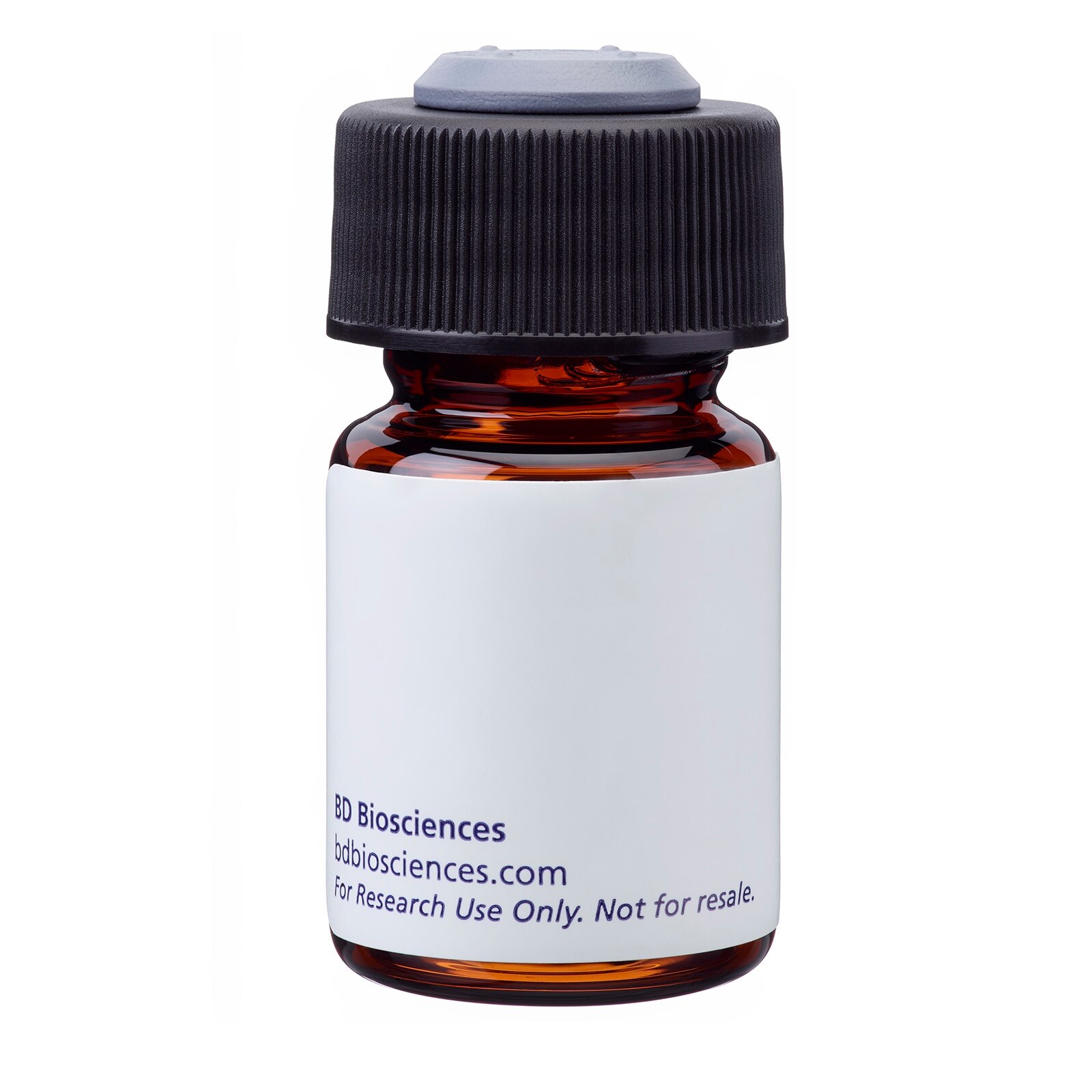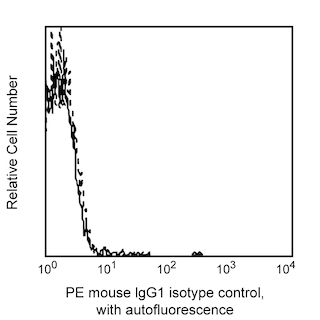-
Your selected country is
Middle East / Africa
- Change country/language
Old Browser
This page has been recently translated and is available in French now.
Looks like you're visiting us from {countryName}.
Would you like to stay on the current country site or be switched to your country?





LPS-stimulated peripheral blood monocytes analyzed by flow cytometry

Flow cytometric analysis of CD142 expression on activated human monocytes. Human peripheral blood mononuclear cells (PBMC) were stimulated (4 hr) with 0.1 µg/mL lipopolysaccharide (LPS; Sigma-Aldrich, Cat. No. L-2654). The cells were harvested, washed and pre-blocked for 10 min with 5% human AB serum. The cells were then stained with either PE Mouse IgG1, κ Isotype Control (Cat. No. 555749; dashed line histogram) or PE Mouse Anti-Human CD142 antibody (Cat. No. 550312/561713; solid line histogram). The fluorescence histograms showing CD142 expression (or Ig Isotype control staining) were derived from gated events with the forward and side light-scatter characteristics of intact activated monocytes. Flow cytometric analysis and data analysis was performed using a BD FACSCelesta™ Flow Cytometer System and FlowJo™ software.


BD Pharmingen™ PE Mouse anti-human CD142

BD Pharmingen™ PE Mouse anti-human CD142

Regulatory Status Legend
Any use of products other than the permitted use without the express written authorization of Becton, Dickinson and Company is strictly prohibited.
Preparation And Storage
Recommended Assay Procedures
BD® CompBeads can be used as surrogates to assess fluorescence spillover (Compensation). When fluorochrome conjugated antibodies are bound to BD® CompBeads, they have spectral properties very similar to cells. However, for some fluorochromes there can be small differences in spectral emissions compared to cells, resulting in spillover values that differ when compared to biological controls. It is strongly recommended that when using a reagent for the first time, users compare the spillover on cells and BD CompBeads to ensure that BD® CompBeads are appropriate for your specific cellular application.
Product Notices
- This reagent has been pre-diluted for use at the recommended Volume per Test. We typically use 1 × 10^6 cells in a 100-µl experimental sample (a test).
- An isotype control should be used at the same concentration as the antibody of interest.
- Source of all serum proteins is from USDA inspected abattoirs located in the United States.
- Caution: Sodium azide yields highly toxic hydrazoic acid under acidic conditions. Dilute azide compounds in running water before discarding to avoid accumulation of potentially explosive deposits in plumbing.
- Please refer to www.bdbiosciences.com/us/s/resources for technical protocols.
- For fluorochrome spectra and suitable instrument settings, please refer to our Multicolor Flow Cytometry web page at www.bdbiosciences.com/colors.
- Please refer to http://regdocs.bd.com to access safety data sheets (SDS).
The HTF-1 monoclonal antibody specifically binds to CD142. CD142 is a 45-47 kDa, single chain, type I transmembrane glycoprotein also known as Tissue Factor (TF). CD142 has been referred in the literature as coagulation Factor III or thromboplastin and it is expressed on activated endothelial cells and lipopolysaccharide (LPS)-stimulated monocytes/macrophages. TF associates with factor VIIa to form a complex and acts as an enzyme that initiates the blood coagulation cascade. It is known as the major initiator of clotting in normal hemostasis. CD142 can be induced by various inflammatory mediators in monocytes and vascular endothelial cells. This antibody is useful in inflammation, thrombosis and hemostasis research.

Development References (5)
-
Carson SD, Perry GA, Pirruccello SJ. Fibroblast tissue factor: calcium and ionophore induce shape changes, release of membrane vesicles, and redistribution of tissue factor antigen in addition to increased procoagulant activity. Blood. 1994; 84(2):526-534. (Biology). View Reference
-
Carson SD, Ross SE, Bach R, Guha A. An inhibitory monoclonal antibody against human tissue factor.. Blood. 1987; 70(2):490-3. (Immunogen: Dot Blot, ELISA, Flow cytometry, Inhibition, Western blot). View Reference
-
McComb RD, Miller KA, Carson SD. Tissue factor antigen in senile plaques of Alzheimer's disease. Am J Pathol. 1991; 139(3):491-494. (Biology). View Reference
-
Morrissey JH, Agis H, Albrecht S, et al. CD142 (tissue factor) Workshop Panel report. In: Mason D. David Mason .. et al., ed. Leucocyte typing VII : white cell differentiation antigens : proceedings of the Seventh International Workshop and Conference held in Harrogate, United Kingdom. Oxford: Oxford University Press; 2002:742-746.
-
Whittle SM, Yoder SC, Carson SD. Human placental tissue factor: protease susceptibility of extracellular and cytoplasmic domains. Thromb Res. 1995; 79(5-6):451-459. (Biology). View Reference
Please refer to Support Documents for Quality Certificates
Global - Refer to manufacturer's instructions for use and related User Manuals and Technical data sheets before using this products as described
Comparisons, where applicable, are made against older BD Technology, manual methods or are general performance claims. Comparisons are not made against non-BD technologies, unless otherwise noted.
For Research Use Only. Not for use in diagnostic or therapeutic procedures.
Report a Site Issue
This form is intended to help us improve our website experience. For other support, please visit our Contact Us page.
